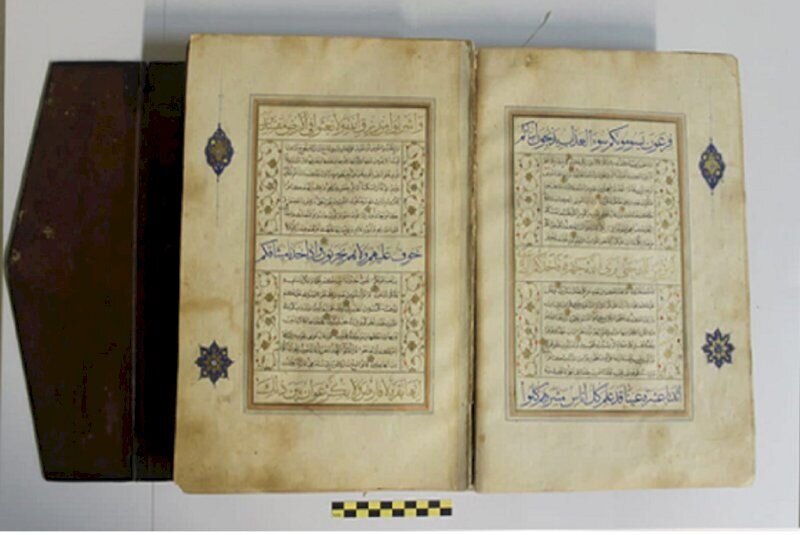Rarely-seen Quran manuscripts unveiled at Tehran museum

TEHRAN – Two rarely-seen copies of the Holy Quran have been put on show at the Reza Abbasi Museum in Tehran.
The manuscripts, dating back to the 16th and 17th centuries, are on display for the first time, the director of the museum has said.
The two manuscripts are illuminated and written in Naskh and Thuluth, Nahid Najafi Khalaj explained on Friday.
The museum continues to display these exquisite Qurans until further notice, she added.
The earliest Quran manuscripts were produced in the mid-to-late 7th century CE (1st century Hijrah), although it is difficult to be precise about their date because ancient copies from this period have not survived intact and exist only in fragments.
Experts say the importance of these fragments cannot be overestimated as they provide the only available evidence for the early development of the written recording of the Quran text.
Named after one of the greatest artists of the Safavid era, Reza Abbasi Museum embraces several permanent exhibition halls, each dedicated to an epoch of Iranian arts and history.
The museum’s treasure trove contains artifacts made of baked clay, metal, and stone from prehistoric times to pottery and metal objects, textile and lacquer paintings, manuscripts, and jewelry belonging to the Islamic period. The displays are set according to the time interval from the 7th millennium BC to the early 20th century.
ABU/AFM
